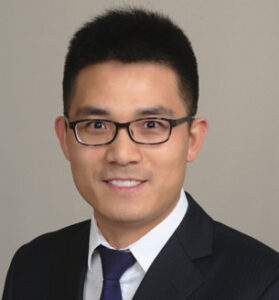Zhenbo Wang, an assistant professor of mechanical, aerospace, and biomedical engineering, is part of a NASA University Leadership Initiative (ULI) team looking at how the electric grid infrastructure can support future air transportation, including aircraft charging stations and the predicted charging demand.
NASA ULI is a competitive grant program that allows the academic community to support NASA’s aeronautical research goals and provide students with a chance to learn by working on real-world technical challenges.
Wang is part of the team led by Liang Sun, an associate professor of mechanical and aerospace engineering at New Mexico State University. The team has received $6 million to study this aspect of future Advanced Air Mobility (AAM) activity.

AAM refers to a variety of current and projected transportation systems, such as small, piloted or self-flying aircraft and drones to meet the future needs of the aviation community, the nation, and the world for safe, efficient, flexible, and environmentally sustainable air transportation.
In addition to NMSU and UT Knoxville, the group includes researchers from George Washington University, UT Chattanooga, the University of Maryland in Baltimore County, Aurora Flight Sciences Corp., Argonne National Laboratory, and Whisper Aero, a start-up based in Crossville, Tenn.
“We share the same interests with different expertise,” he said. “My group focuses on the infrastructure design, as well as AAM portal siting with electric grid integration.”
AAM’s physical infrastructure includes facilities such as “vertiports” (vertical airports) that might be located on building rooftops for urban air mobility or using underutilized existing airports for regional air mobility. Digital infrastructure refers to the airways or air corridors that connect these portals to provide AAM services and flight management techniques that coordinate aircraft operations.
Since many AAM aircraft would be electric-powered, the team will conduct energy consumption modeling for AAM aircraft using real-world data; work on developing safe, energy-efficient, and emission-aware AAM operational strategies to meet flight demand; and assess energy costs and emission impacts of AAM operations from an electric grid perspective.
Wang said he expects to focus heavily on how AAM can be used in Tennessee. He will work closely with team member Whisper Aero, which is already developing a prototype of an AAM passenger aircraft.